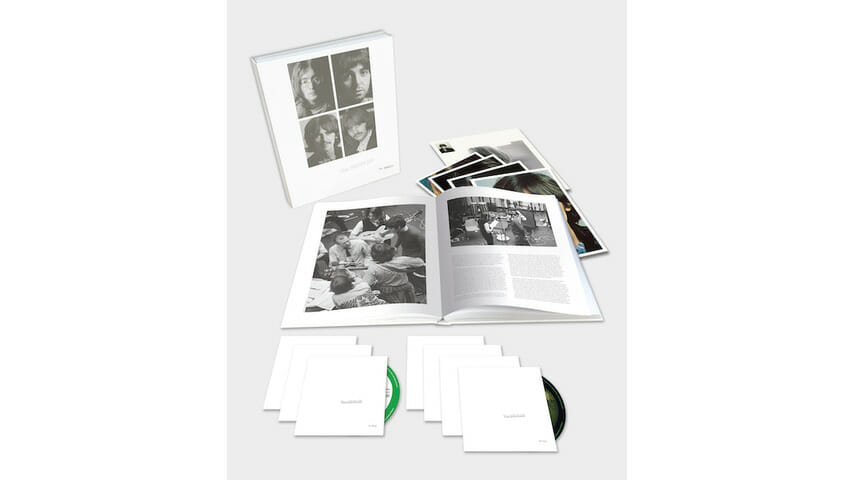The Beatles: The Beatles

For some folks—even some of the people that had a hand in making it—The Beatles, a.k.a. The White Album, is far too long, far too jumbled for its own good. In the 50 years since its original release, fans the world over have attempted to boil down the two disc, 30 song sprawl into a tight, single LP. Even today, rock critics Steven Hyden and Rob Mitchum have, on the Celebration Rock podcast, put together their dream version: a 12-track album that even swaps out the well-known renditions of songs on the original release with alternate takes and other songs from the era.
What must all of those folks make of the recent re-release of The Beatles, particularly in its super-deluxe form: six CDs and one Blu-ray, gathering together everything from the demos the group recorded at George Harrison’s pad in Esher before entering the studio to copious studio outtakes? And, of course, a remastered, remixed version of the 1968 album, overseen by Giles Martin, the son of the Beatles’ longtime producer George Martin.
It’s the kind of overstuffed treasure chest prevalent in an era where no album anniversary can go uncelebrated. And it’s kind of nostalgia bomb that music fans are feeling the slow aftershocks of in recent months with the luxe re-releases of other 1968 masterpieces like Music From Big Pink, Electric Ladyland and Cheap Thrills. But this is the Beatles we’re talking about, one of the most overanalyzed bands to ever walk this planet. No opportunity to remind the world of their collective greatness can be dismissed, no matter how shaggy and out of tune the rough takes are.
-

-

-

-

-

-

-

-

-

-

-

-

-

-

-

-

-

-

-

-

-

-

-

-

-

-

-

-

-

-

-

-

-

-

-

-

-

-

-

-








































